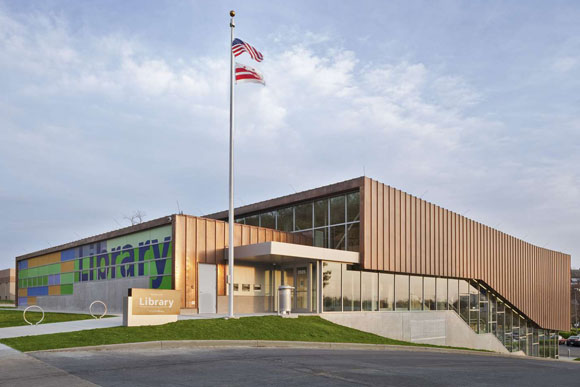The built environment plays a crucial role in a neighborhood's health. Would upgrading Ward 7's downtown create healthier people?
With new retail and commercial districts springing up across the city, one east-of-the-river resident thinks it’s about time Ward 7 joins the fold of communities under construction.
Tom Brown, co-founder of the Washington East Development Alliance, has proposed to the city government a Community Improvement Corridor (CIC) to address the needs of Ward 7 residents. The reconstruction of a “downtown Ward 7” at the intersections of Minnesota Ave. NE and Benning Rd. NE would provide a vibrant and welcoming atmosphere where locals and visitors can share a sense of community and urban life with access to retail, entertainment and social spaces.
In addition, the CIC would integrate programs for job creation, affordable housing, green and creative arts, education and health.
 A better environment, a healthier community
A better environment, a healthier community
The effort, if successful, would bring more than economic prosperity to a part of D.C. that has been relatively neglected. It could actually make nearby residents healthier.
"We've come to understand very clearly around issues of obesity and asthma that the way cities and communities are organized impact those issues," says Sophie Godley, clinical assistant professor and director of undergraduate programs in community health sciences at the Boston University School of Public Health.
In many cities, she says, once a substantial tax base is lost due to “white flight,” many communities become concentrated with the most poor residents who receive little resources, poorly funded schools and limited access to healthy options.
In addition to
studies correlating a healthier built environment with healthier people, Godley points to the work of urban revitalization strategist Majora Carter, who stands on the premise that one should not have to leave a neighborhood to live in a better one.
In 2001, Carter founded the organization Sustainable South Bronx (SSBx), that has since found solutions to environmental issues facing New York communities by combining green job training, community greening programs and social enterprise.
Godley also argues that factors such as quality of housing, access to retail, parks and recreation, walkable and bikeable communities and general safe spaces affect not only obesity, asthma, accidents and injuries, but youth issues like teen pregnancy.
“Whether communities are built in a way that fosters neighborhood cohesion or a sense of well being and hopefulness about the future, all of contribute to adolescents’ exposure to sexual risk or to protective messages around their sexual health,” she says.
As the national teen pregnancy rate has decreased, and D.C. dropped 3.4 percent between 2007-2011, the rates in Wards 7 and 8 have remained stubbornly high.
“In public health, we sometimes call this the ceiling effect—anyone who was relatively ready to change or able to be influenced to change, we’ve got. So now we're left with these communities where the struggles are deeply embedded and the problems are much bigger than the individual,” says Godley.
 The Dorothy Height/Benning library, renovated in 2010
A controlled environment for teens
The Dorothy Height/Benning library, renovated in 2010
A controlled environment for teens
In Brown’s vision for Ward 7, there would be less access to drugs, alcohol and gang-related activities.
“A bunch of bars and clubs certainly would not help,” says Brown.
For Ward 7 teens, the effort could establish a more controlled and healthy city life closer to home.
“They all gather down in Gallery Place or in the suburbs,” says Brown. “If we have a little more activity and pride in our own region, we can drive whatever culture it is that we think is valuable as a community.”
“Giving them the opportunity to explore their talents, skills and interests, while allowing them to see that things can turn into ways to sustain themselves, sparks a level of purpose that gets them less focused on social aspects of life that usually lead to getting active in certain social behaviors that aren’t healthy,” says Brown.
Navigating safe communities
Transportation is a key piece to building the health of communities, as well. Currently, the DC Department of Transportation is laying out plans to create safer roads that will benefit drivers, cyclists and pedestrians across the city.
Improving options for pedestrians makes it easier to explore what neighborhoods have to offer.
“Making it safer to reach the bus stop or bicycle to school is an important part of giving teenagers and others better transportation choices so that they can be more involved and enjoy community and recreational activities,” says Cheryl Cort, policy director at the Coalition for Smarter Growth. “It also give parents confidence that their children are safe.”
East-of-the-river communities have just as much potential as other parts of the city in creating healthier communities built on American principles and collective resources can make a difference.
“Wards 7 and 8 are no different," says Brown. "The opportunities to take advantage and build on economic sustainability is really one of the major pillars that impacts our culture.”